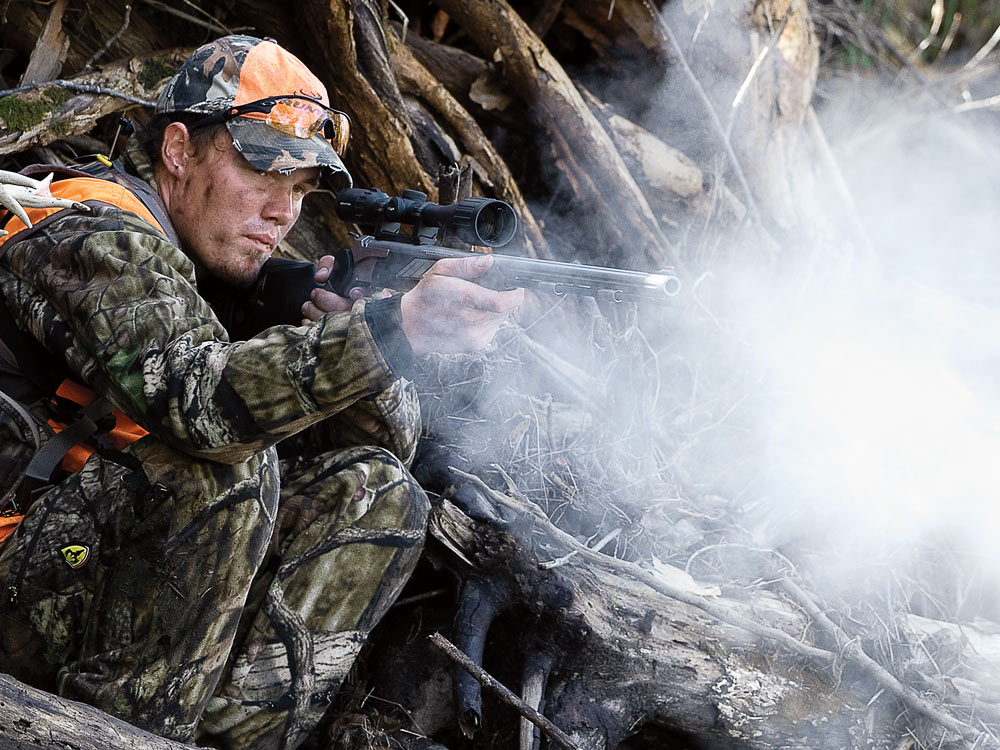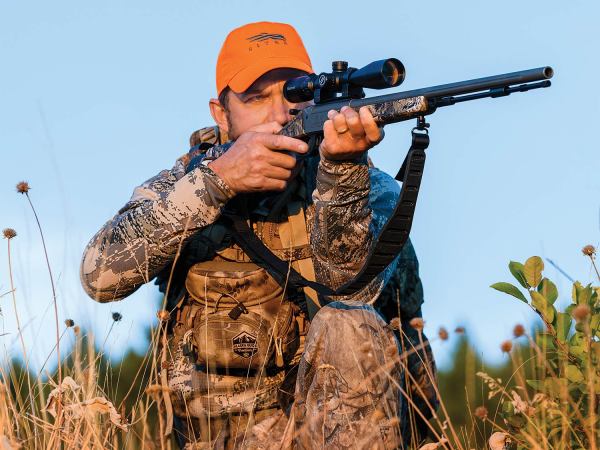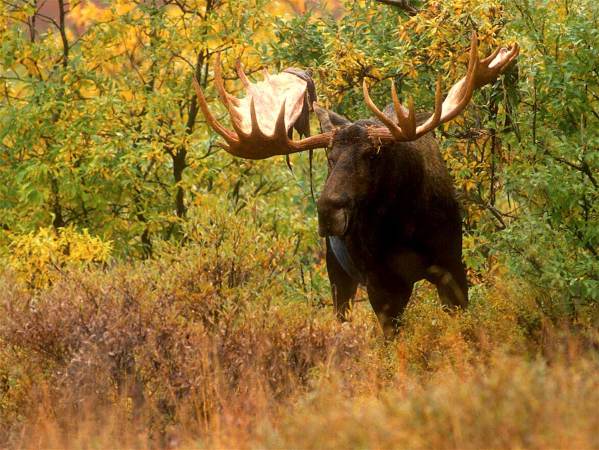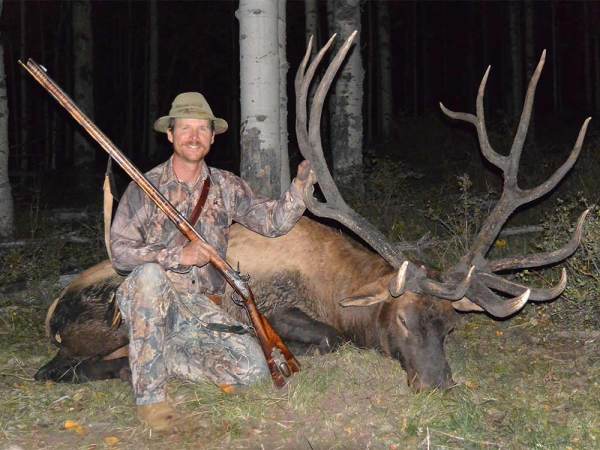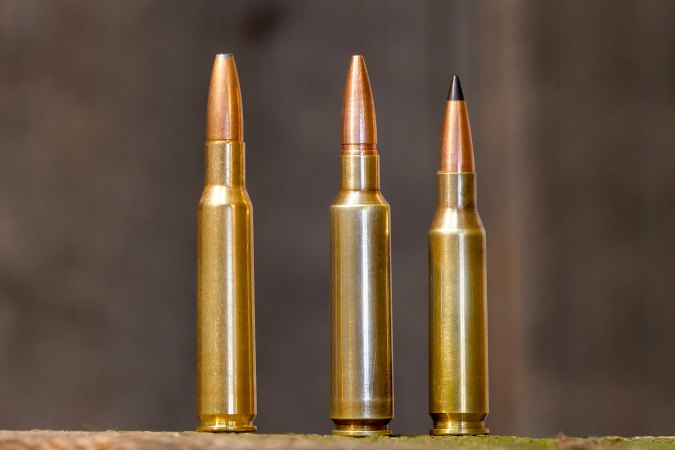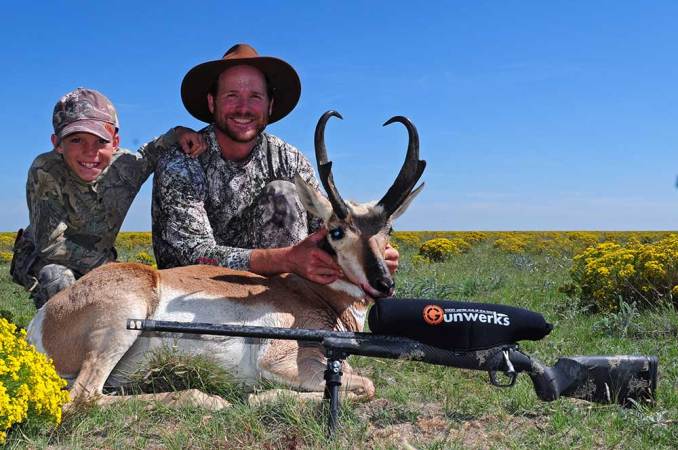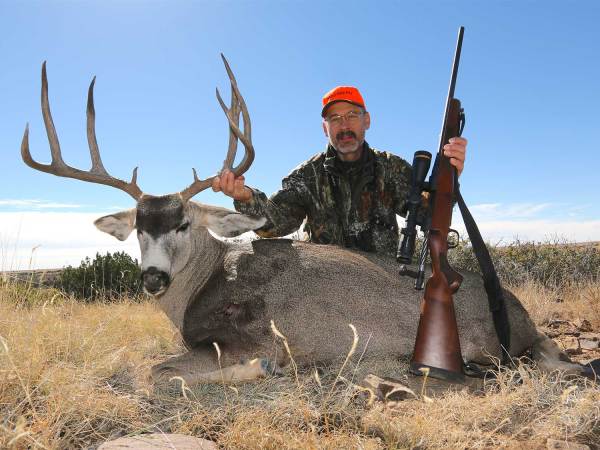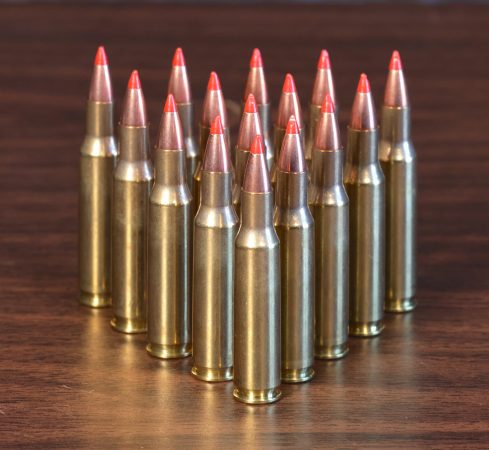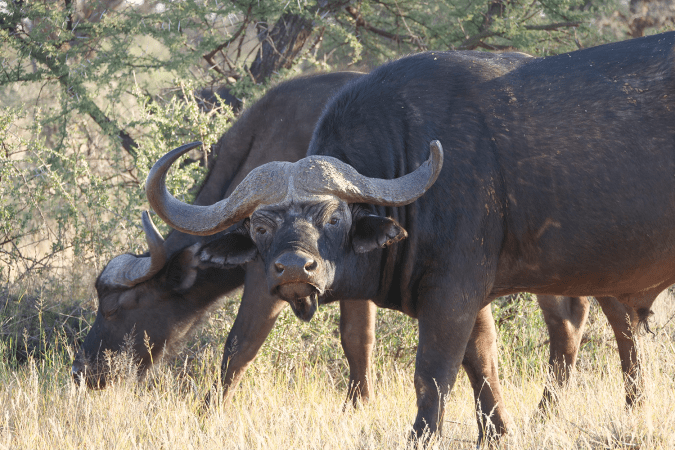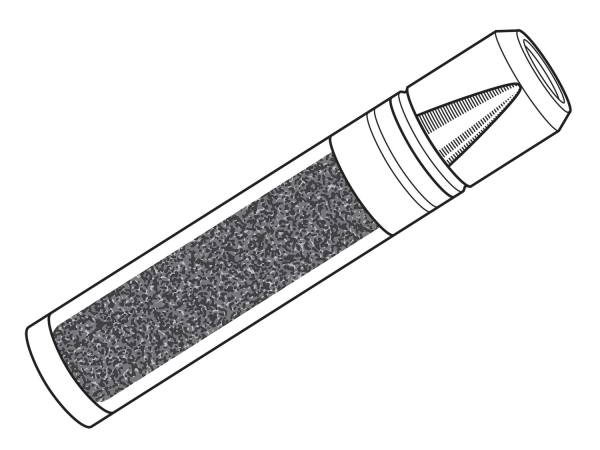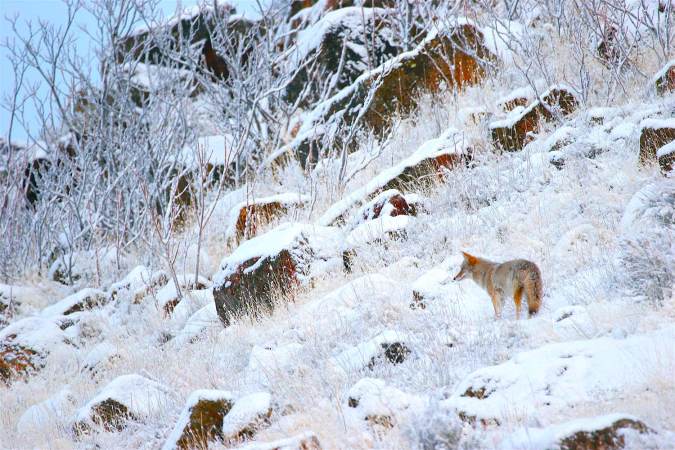We may earn revenue from the products available on this page and participate in affiliate programs. Learn More ›
When Jeff Lester of Hunt Hard Outfitters told me to be prepared for a 300-plus-yard shot on my upcoming New Mexico elk hunt, I thought he was blowing smoke. Lester explained that there were lots of really good bulls in the area, but that the terrain made it very difficult to get closer than 300 yards. If I wasn’t comfortable shooting to that distance or farther, he explained, I’d have to pass on most shot opportunities.
Like so many hunters, I had established an arbitrary effective range for muzzleloading rifles without ever truly testing their limits. After speaking with Lester, I realized I’d underestimated the potential of today’s crop of class-leading smokepoles. Improved bullets, powders, and optics allow you to effectively take game out to 300 yards and, yes, beyond. But making an accurate shot at those ranges demands the right equipment and a great deal of practice. After experimenting with loads and powders, I found I could consistently slap plates out to 400 yards with the Remington 700 UML I was carrying on that hunt. And, two days into the hunt, when a big New Mexico bull elk climbed out of a canyon just after sunrise and headed for the timber above, I was ready. The shot was just a bit over 300 yards, but I was confident in my rifle. The Remington delivered the bullet just behind the shoulder, and the bull barely made it 30 yards before dropping.
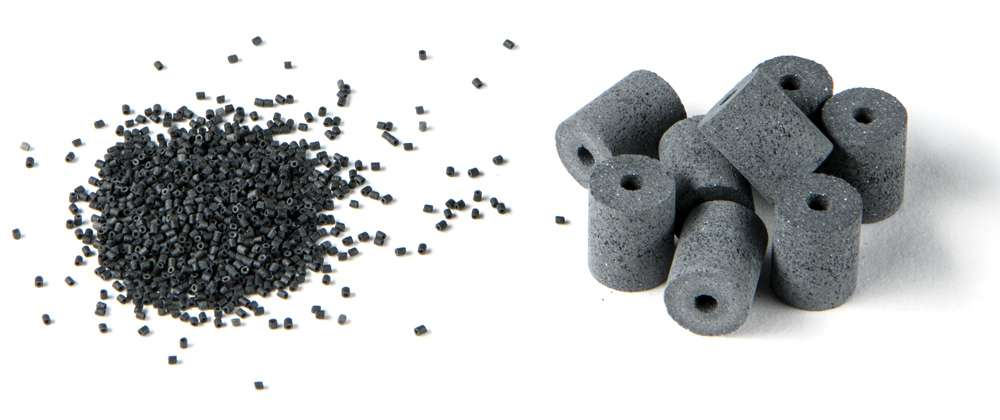
Are you looking for that type of accuracy from your muzzleloader? It’s possible. Here are some tips to help you increase your effective range with a blackpowder firearm.
No. 1: Choose the Right Rifle
Most dedicated long-range muzzleloaders are bolt-actions designed to increase stiffness and improve accuracy. Carbon-fiber stocks, aluminum chassis, and hand-lapped barrels are common on top-end muzzleloading rifles.
No. 2: Clean Often and Effectively
For maximum consistency, clean your barrel between shots. Use a jag that allows you to get all the way to the bottom of the barrel and cleaning solvents that are designed for black powder.
No. 3: Change Things Up
Swap powder manufacturers and charge weights as well as bullets in your quest to find the right combination for your rifle.
No. 4: Watch the Temperature
John Fink, Remington‘s director of product management for firearms, warns that shooting muzzleloaders in temperatures above 80 degrees Fahrenheit can cause problems with consistency. Also, not letting the barrel cool between shots can actually heat a sabot and change the composition of the plastic enough to affect accuracy.
No. 5: Understand Dwell Time
It’s a good idea to hold the forearm of a muzzleloader firmly against the bags when shooting. According to Fink, dwell time (length of time the projectile is in the barrel) is greater than with a centerfire rifle, and allowing the gun to rest loosely on the bags can negatively affect accuracy.
No. 6: Consider Your Powder
Pelleted powders are very convenient, but don’t discount loose powders. They tend to produce more consistent velocities and pressures, and you can adjust charges in small increments to find what works.
No. 7: Play the Wind
Wind is the greatest challenge when taking a shot beyond 200 yards. “Because of the lower velocities and lower-performance bullet shapes, wind deflection is significantly more than with your traditional long-range rifle,” says Gunwerks founder Aaron Davidson. At 100 yards in a 10-mile-per-hour crosswind, a 300-grain .50-caliber sabot muzzleloader bullet may drift 3 inches or more. With that same wind speed, a 500-yard shot will result in more than 6 feet of bullet drift.
“Practice shooting in the wind, and learn to estimate wind speed using mirage, vegetation, and a wind meter,” Davidson says.
Read Next: Best Hunting Rifles: 4 Muzzleloaders, Tested
Three Long-Range Muzzleloaders
Remington 700 UML

Based on the Model 700 action, these muzzleloaders utilize Remington’s UML Ignition System, which looks like the rear half of a .308 Winchester case. A specially designed breech plug makes the system safe and efficient, and this muzzleloader can handle 200-grain charges. There’s even storage for three UML Ignition System primers under the floor plate.
Gunwerks Muzzleloader

Gunwerks Muzzleloader ▪ With a three-month wait and a nearly $5,800 price tag, this isn’t your daddy’s blackpowder rifle. However, it’s loaded with sophisticated features like a hand-lapped barrel with 5R rifling, an aluminum chassis, and an external adjustable trigger with 1 ounce per click adjustments. And it’s a legitimate 500-yard muzzleloader.
Ultimate Firearms Johnston Muzzleloader

These rifles use converted Remington 700 actions and come with McMillan stocks. There’s also a model with dedicated long-range iron sights for hunting in states where optics on muzzleloaders are not permitted. Prices start at $2,500, but the accuracy is outstanding.
